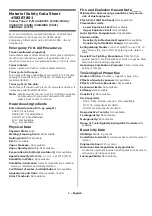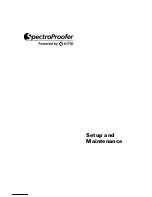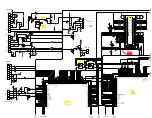Reviews:
No comments
Related manuals for PIP-RPA

C831
Brand: Oki Pages: 8

Stylus Pro 7900
Brand: X-Rite Pages: 36

KX-FLM551
Brand: Panasonic Pages: 2

UNI2-VAV
Brand: Nailor Pages: 6

DocuPrint N24
Brand: Xerox Pages: 10

WINE CAPTAIN U-2115WCOL-00
Brand: U-Line Pages: 5

RUNA
Brand: 2E GAMING Pages: 26

SpinnerShark
Brand: Fuzion Pages: 8

USB temperature
Brand: MADRIX Pages: 2

Nipples
Brand: DrBrowns Pages: 2

Sentinel A50
Brand: ESAB Pages: 12

OR-CR-233
Brand: Orno Pages: 4

Monitor _QSG_DE01
Brand: M-Audio Pages: 6

ANOMULTI ROUND WITH CABLE CLIP AND CABLE AND SAUCER
Brand: ROSE DISPLAYS Pages: 4

012264
Brand: Anslut Pages: 6

efector 200 O4P2 Series
Brand: IFM Pages: 3

KB16S
Brand: Yekbee Pages: 6

002895060
Brand: eta Pages: 32
















